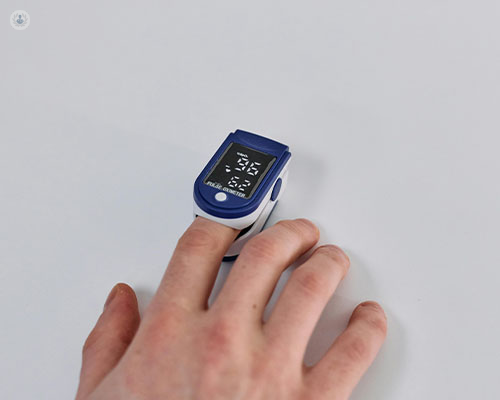Let's get physical with cardio and pulmonary exercise testing
Escrito por:The heart and the lungs have a close relationship that’s not just based on location. Lungs disperse oxygen into the blood, and the heart makes sure that the blood travels around the body, depositing oxygen to all the organs and limbs. When something goes wrong with one, the other may not be too far behind, which is why they can be evaluated conjunctively with cardio and pulmonary exercise testing. Leading consultant pulmonologist Dr Bhashkar Mukherjee explains why doctors conduct this test and what to expect.

The cardiopulmonary exercise test (CPET) evaluates the interactions between the heart and the lungs via physical exercise. They are two of the most basic organs needed for a living person and the body cannot work without either of them. Physical activity is a good way to agitate both systems – the heart will beat fast and the lungs take in more air – which is why the CPET is conducted. The condition and capacity of both the heart and the lungs can be gauged this way.
Why are CPETs conducted?
A CPET will be recommended by the doctor if they have detected a cardiac disease, such as myocardial ischemia, or a pulmonary disease like asthma, to assess the impact on the cardiopulmonary system. If the patient experiences heart pain, dizziness, or shortness of breath whilst engaging in physical activity, CPET can be used as a diagnostic tool.
The CPET will also be used to:
- monitor
- exercise capacity
- the severity of a respiratory disease
- response to treatment
- assess
- musculoskeletal disease
- stamina and endurance
- anaerobic threshold
- risk for planned surgical procedures
- results of a rehabilitation programme or surgical procedure
- define
- exercise capacity
- impairment or disability
What happens during a CPET?
The physical activity portion of the CPET is normally conducted on a stationary bicycle or a treadmill, but alterations may be necessary according to the patient’s physical capabilities, age, weight, and current condition. During the test, the patient will be connected to an electrocardiogram machine via sticky electrodes to record the heart’s performance. If the concern regards the lungs, the patient may be subject to a bronchial provocation where they have to inhale doses of methacholine that will intentionally narrow the airways to assess lung performance. A blood pressure cuff will be placed on the upper left arm, and a pulse oximeter on the finger, ear, or forehead to evaluate cardiac function. A mask or mouthpiece will be affixed to the face that the patient will breathe through and into a flow meter to evaluate pulmonary function, as well as levels of oxygen and carbon dioxide.
In order to prepare for the CPET, patients will be asked to refrain from smoking nicotine, alcohol, and caffeine before the test, and to ensure they have a light meal and nothing more at least three hours before. Patients should wear loose, comfortable clothing so as to not restrict blood flow. Any further, specific instructions will be supplied by the testing team.
If you are experiencing breathing difficulties or shortness of breath, Dr Bhashkar Mukherjee is available to book for consultation via his Top Doctors profile.


